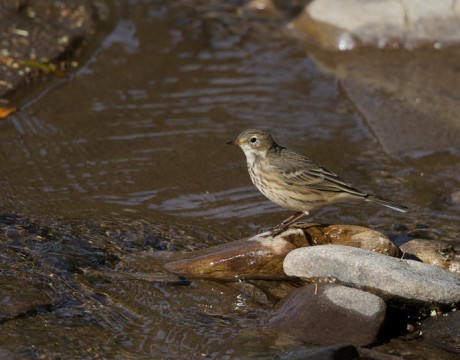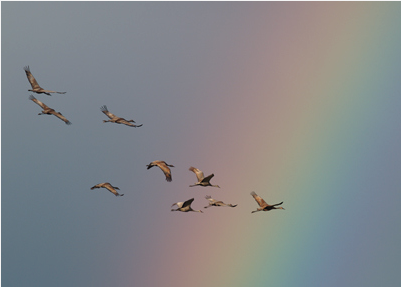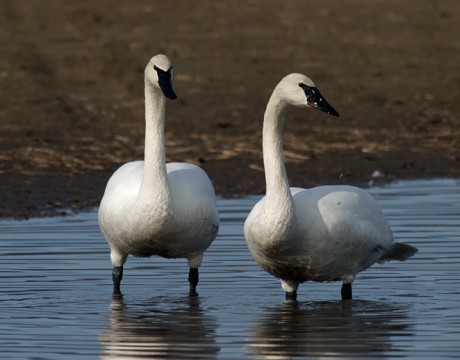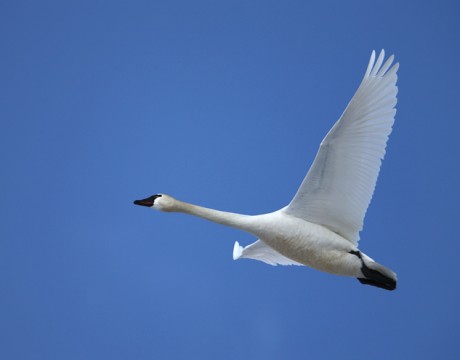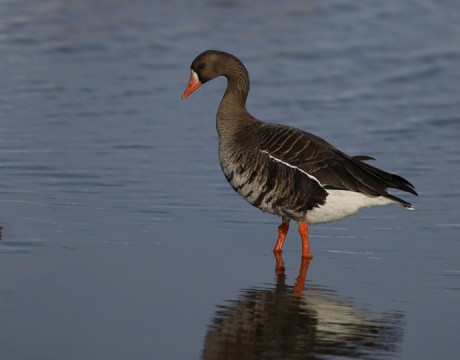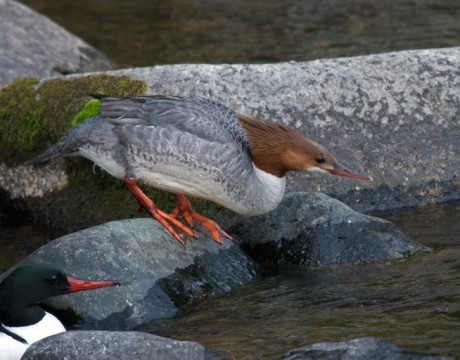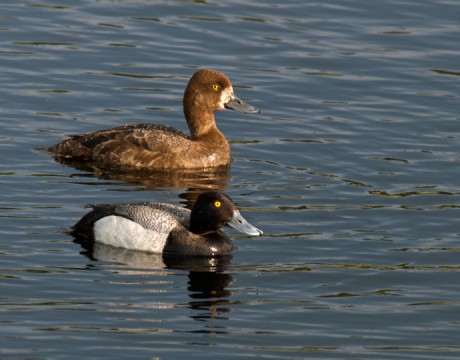Bird of the Week – American Pipit
American Pipits breed on the alpine tundra, well above tree line. Unless you visit the Denali Highway, or Eagle Summit on the Steese Highway, or otherwise get to those higher elevations, you’ll only see these birds in Spring and Fall migration. This bird is already in winter plumage, losing the buffy-orange chest of breeding plumage in favor the less-conspicuous heavy streaking you see here. Soon enough, this bird will leave for southern Arizona and New Mexico for the winter. Camera geek stuff: Canon 5D Mark II, 500mm lens with 1.4 teleconverter; f5.6, 1/1250, ISO 200. For more bird photos, please…
Aurora Hits Lower 48 Tonight!*
It’s rare that the lower 48 gets a good look at the aurora – but depending where you are in the northern USA and southern Canada tonight you just might get a chance. According to some experts it’s going to be a good week for viewing the northern lights… assuming cloud cover stays away and you can find somewhere away from light pollution. For all of those first time aurora shooters out there, I recommend that you read TheMudflats contributor Carl Johnson‘s article over at his blog, with some great pointers on how to get the best image. Please also check…
Bird of the Week – Sandhill Cranes
The Sandhill Crane Festival was last month here in Fairbanks. WC thought he’d break out of the usual Bird of the Week format and help folks get ready for autumn with an essay he wrote for another forum a few years ago. THE MAGIC OF SANDHILL CRANES Each fall, several thousand Lesser Sandhill Cranes stage at Creamer’s Field Migratory Wildlife Refuge as a part of their fall migration. The Refuge, a former dairy, is managed by the Alaska Department of Fish & Game as a working farm and hosts large numbers of waterfowl in both the spring and fall. But it’s in the fall…
Bird of the Week – Trumpeter Swan
Alaska’s biggest bird by weight, the Trumpeter Swan: At 23 pounds, with a wing span of nearly seven feet, this is one Big Bird. Their distinctive bugling call is one of WC’s favorite sounds of Spring. The species was nearly extirpated in the Eastern half of the U.S. by the feather trade, but has made a steady recovery. While there are certainly still Alaska waterfowl WC could post, it’s time for a break from the pond and lake crowd. We’ll change bird families next week. For more bird photos, please visit Frozen Feather Images.
Photos: A Day At the Fair [The New York State Fair]
I’d rather be covering the Alaska State Fair which is this week, but I’m stuck in Upstate New York. So, here are some photos from the New York State Fair. It was Governor’s Day at the fair, and unlike in Alaska where that might mean free hamburgers and salmon, in New York it means protests and Dinosaur BBQ.
Bird of the Week – Tundra Swan
While a little smaller than it’s Trumpeter Swan cousin, the Tundra Swan is a big bird, weighing in at just under 14 pounds. They are truly lovely in flight. The “ski jump” shape to the bill, as opposed to the Trumpeter’s wedge-shape, as well as the yellow patch at the corner of the eye, distinguish Tundras from Trumpeters. The size difference is difficult to judge unless you have both species, side by side, in the field. For more bird photos, please visit Frozen Feather Images.
Bird of the Week – Greater White-fronted Goose
The Speckle-belly, as it’s known to hunters, is a medium-sized goose that mostly breeds in coastal Alaska, but is a fairly common sight in Alaska in spring migration. It’s impossible to mistake a Speckle-belly for any other bird in Alaska; the orange bill with the white line is definitive. For more bird photos, please visit Frozen Feather Images.
Bird of the Week – Common Merganser
The Common Merganser breeds south of the Brooks Range in Alaska, in wooded areas along clearwater streams. The female has that excellent spiky hairdo feather-do; the male is a bit plainer, but both have the bright orange bill that is a good field mark for these birds, although you want to be sure you don’t have a Red-breasted. They are one of the less common ducks in Alaska, but you can usually find them canoeing a clear water river. Most years there’s a pair on the West Fork of the Upper Chena River. This is a fish-eating duck; that long…
Bird of the Week – Lesser Scaup
Lesser Scaup is another species of marsh and sea duck that breeds far inland in Interior Alaska. Lesser Scaup are notoriously difficult to tell from their close cousins, Greater Scaup. Their ranges overlap, too. But by slight differences in the head, neck and pattern on the back, you can usually tease the two apart. These birds were at the Peat Ponds, one of the better birding spots around Fairbanks. The photo was taken in the fall of 2013. The female has moved into eclipse plumage; the male is still in breeding plumage. For more bird photos, please visit Frozen Feather Images.
Border Watch: 13 Hours on the Rio Grande
It’s 110 degrees out here and it’s only 10 a.m. Marcus and I will be here for a total of 13 hours. At 10am, it’s hour 4. Supposedly, this is where many people have been crossing the Rio Grande en masse. The photos we’ve seen from this spot by the very excellent Daily News shooter Marcus Santos show rafts coming across the river. We need this shot, as it will pretty much justify this whole trip to Texas. The rafts in the photos go right up to the American shore, with the Border Patrol waiting. From there, they are quickly processed and sent to…





